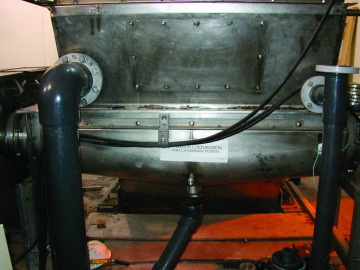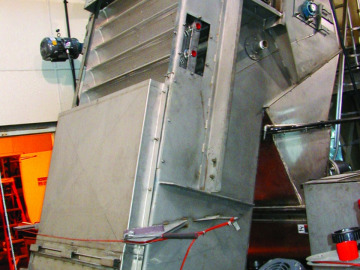Aqua Guard PF Perforated Plate Screen - Anchorage, AK
Overview
The City of Anchorage Alaska built the original John M. Asplund WWTP in 1972. The plant was expanded and upgraded in 1982 to 28 MGD and again, in 1989, to 58 MGD in order to accommodate population growth.
The Asplund plant operates 24/7 and is designed to provide discharge quality effluent in 4 – 6 hours from the time raw sewage enters the plant. Because treated effluent is discharged directly into Cook Inlet, it is essential that a consistent level of treatment be maintained to protect aquatic life. A highly skilled operations staff keeps the process optimized.
Problem
Wastewater treatment begins at the headworks of a wastewater treatment plant. Here inorganic solids including grit are removed from the raw sewage. Headworks screens and grit removal systems are used to capture this solid material. The remaining liquid wastewater flow containing smaller suspended solids and organic material continues on downstream for further treatment.
Removing as many solids as possible at the headworks improves downstream treatment processes. As plants improve their headworks processes by adding finer screens to capture more solids, additional steps in the solids handling process must be added. Solids and grit removed from the waste stream contain organics that inhibit dewatering and produce odors. Screenings washing removes the organics and enables dewatering of the solids to a level acceptable to landfill. As part of the Asplund plant upgrade, a new headworks was designed by CH2MHill. The new headworks design incorporated a complete solids handling system provided by Parkson Corporation and included screens, screenings washing and dewatering and conveying and load out.
Solution
Parkson’s system starts with three Aqua Guard® PF perforated media channel screens with 6mm screen openings for influent screening. Each screen discharges directly into a Parkson shaftless spiral screenings washer. After washing, the screenings enter a compactor for dewatering and then discharge into a horizontal transfer conveyor for the trip to a load out hopper.
This compact system is fully enclosed for odor control and completely automated via SCADA. All activity such as washing I cycle, washer spray water, hot water flush for compactor, washer/compactor coordination, conveyor cycling and VFD drive is operated by the plant SCADA system.
Results
Since commissioning in early 2005, operating personnel have been successfully optimizing and refining the integration of the new headworks solids handling system with the SCADA controls.



